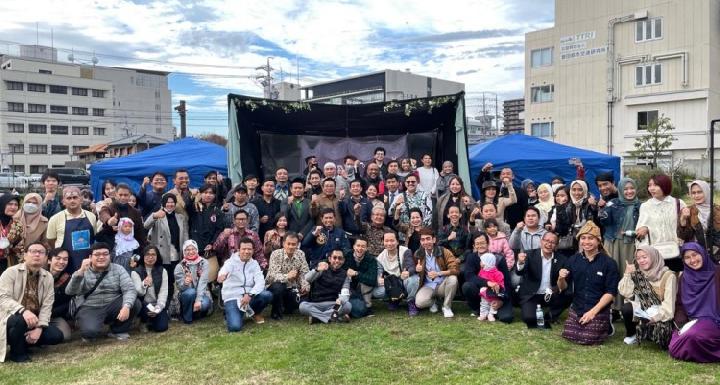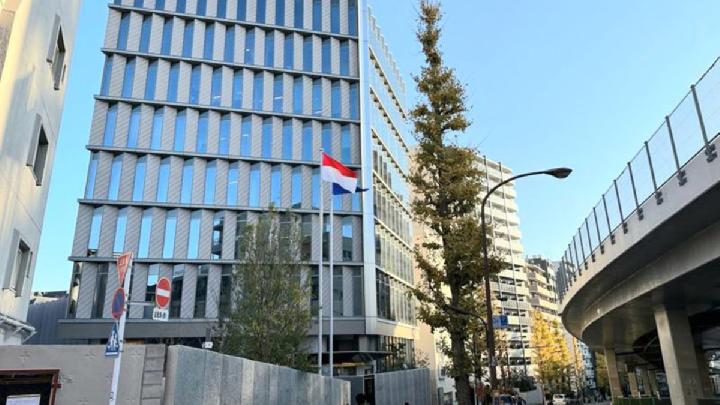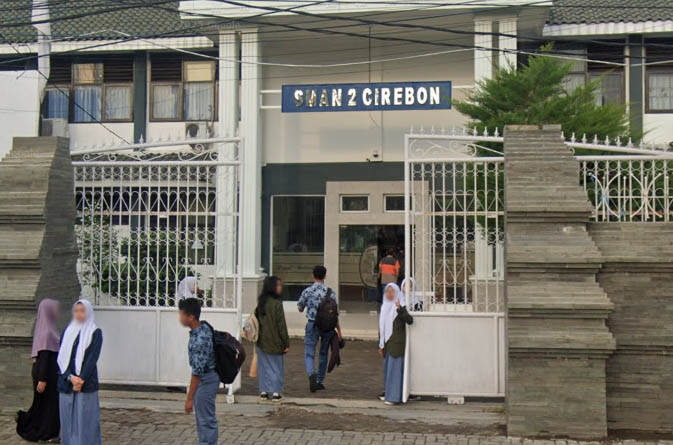From the moment Evander 'The Real Deal' Holyfield crossed into heavyweight territory, Las Vegas became one of his proving grounds: bright lights, unforgiving scrutiny, massive stakes.
The city didn't just host a string of fights, it saw Holyfield evolve: from cruiserweight champion to heavyweight, from contender to legend, from warrior with heart to icon with stories no one could forget.
Over 17 bouts in Vegas, some nights stand out above all others - moments of triumph, controversy, sheer will. These are the nights that made Evander Holyfield in Las Vegas.
The moment he truly announced himself as heavyweight champion came on October 25, 1990, at The Mirage, then one of the most glamorous venues on the Strip. Just months earlier James 'Buster' Douglas had stunned the world by knocking out Mike Tyson in Tokyo, but his reign proved fleeting.
Overweight and ill-prepared, Douglas entered the ring against a man who had risen from cruiserweight with a reputation for discipline and determination. Holyfield, lean and focused, seized the moment.
In the third round he detonated a perfect right hand that sent Douglas sprawling to the canvas, unable to beat the count. After one minute and 10 seconds of conclusive action in the third round, Holyfield became the undisputed heavyweight champion of the world, and in doing so etched his name into the Vegas storybook.
When speaking to Daily Mail Sport about his favourite Las Vegas moment, Holyfield said: 'I would say my favourite memory in Las Vegas is when I became the heavyweight champion. When I beat Buster Douglas. I knew it was going to be a big moment and I knew it was going to be a big fight.
From the moment Evander 'The Real Deal' Holyfield crossed into heavyweight territory, Las Vegas became one of his proving grounds
Evander Holyfield slams former heavyweight champ Buster Douglas with a right punch in the third and final round of their title fight in Las Vegas (above)
Holyfield and Larry Holmes fight for the WBC, WBA, IBF heavyweight tittles on June 19, 1992 at Caesars Palace in Las Vegas (above)
'It had taken me 30 years to get there. I had been dreaming of that moment since I was a child. I was eight years old when I was told I could be the champion and all that, so it meant a lot when it happened.'
For Holyfield, however, Vegas was never going to be about just one crowning night. On June 19, 1992, he defended his titles against the legendary Larry Holmes at Caesars Palace.
Holmes was 42, past his peak but still savvy and tough enough to trouble anyone. In sweltering desert heat, Holyfield had to rely on his stamina and sharper work to outlast the veteran challenger.
It was a gruelling twelve rounds, full of clinches and bursts of quality, but when the final bell rang the judges were unanimous: Holyfield retained his belts. It was not the most spectacular of nights, but it demonstrated his ability to handle the pressures of champion life, carrying the weight of expectation in the city where champions are made and broken.
Then came November 13, 1992, at the Thomas & Mack Center, when Holyfield met Riddick Bowe in a fight that has gone down as one of the great heavyweight battles of the modern era.
The contrast was stark: Holyfield the relentless warrior against Bowe, younger, bigger and heavier. What followed was twelve rounds of brutal intensity, a war that left both men exhausted and the crowd in awe.
The fight produced several unforgettable moments, highlighted by a brutal 10th round in which Holyfield took a punishing uppercut from Bowe but showed remarkable determination to finish the round on a strong note. The Ring magazine later honoured this round as Round of the Year.
Bowe won a unanimous decision and Holyfield surrendered his titles, but he left the ring with his reputation enhanced. It was the kind of fight Las Vegas thrives on: dramatic, punishing, unforgettable.
Riddick Bowe and Evander Holyfield fight for the WBA and IBF heavyweight tittle on November 6, 1993 at Caesars Palace in Las Vegas (above)
A paraglider lands on the ring apron 06 November 1993 during the seventh round of the Heavyweight Championship fight betwen Evander Holyfiield and Riddick Bowe (above)
If that was heartbreak, redemption came a year later in the rematch at Caesars Palace. On November 6, 1993, Holyfield challenged Bowe again, this time with the WBA and IBF titles on the line.
The fight itself was compelling, but it was what happened in the seventh round that ensured its place in history. Out of nowhere, a man piloting a motorised paraglider crash-landed into the ring, tangling himself in the ropes and bringing the contest to a standstill for more than 20 minutes.
When order was finally restored, Holyfield showed astonishing focus, regaining his rhythm and pushing the bigger man back. After twelve rounds, the judges gave him a majority decision, and Holyfield was champion once more.
If those nights built his legend, the defining moments came with Mike Tyson. On November 9, 1996, at the MGM Grand Garden Arena, the bout billed simply as 'Finally' brought together the two men boxing had long demanded to see face each other.
Tyson was the overwhelming favourite, seen as too powerful, too ferocious for a man many thought was past his best. Yet Holyfield had other ideas. From the opening bell he stood up to Tyson's power, absorbing heavy shots, countering smartly and refusing to be intimidated.
As the rounds wore on, it was Tyson who faded, while Holyfield grew stronger. In the 11th round, with Tyson pinned against the ropes and unable to defend himself, referee Mitch Halpern stepped in.
Holyfield had stopped the most feared fighter of his era and become a three-time world heavyweight champion. Against every prediction, it was Holyfield who emerged triumphant, and it remains one of the greatest upsets in heavyweight history.
Barely seven months later he was back at the MGM Grand for the rematch, and what unfolded on June 28, 1997, would go down as the most infamous night in modern boxing.
Mike Tyson protects himself from Evander Holyfield during the first round 28 June 1997 of their WBA heavyweight championship fight at the MGM Grand Garden Arena in Las Vegas (above)
A close-up of the injury to the right ear of Evander Holyfield after Mike Tyson bit off a piece of it in the third round of their second fight (above)
Again, Holyfield was performing strongly, frustrating Tyson with his movement and inside fighting. Tyson, claiming to be angered by head clashes, completely lost control.
In the third round he sank his teeth into Holyfield's right ear, tearing off a chunk of cartilage and spitting it onto the canvas. After the ringside doctor allowed the fight to continue, Tyson struck again, biting the other ear.
Referee Mills Lane had no choice but to disqualify him, awarding Holyfield the victory. The scenes were chaotic: fans aghast, officials scrambling, Tyson out of control.
Holyfield, bloodied but composed, retained his title in what quickly became known as 'the Bite Fight'. Tyson was fined $3million and banned, while Holyfield's reputation as the sport's ultimate survivor only grew stronger.
Even as his career moved into the new millennium, Las Vegas continued to provide him with opportunities and challenges. On August 12, 2000, at the Paris Las Vegas hotel, he fought John Ruiz for the vacant WBA heavyweight title.
Ruiz was underestimated by many, but he pushed Holyfield hard across twelve rounds. It was a rough, awkward affair, but Holyfield's experience and greater accuracy told.
He won by unanimous decision, making him the first man in history to win a version of the heavyweight title four times. Even as age was beginning to catch him, Holyfield still found ways to write history under the Vegas lights.
Reflecting on his Las Vegas fights as a collective, Holyfield told Daily Mail Sport: 'It's amazing to look back and think about all of these fights. The Mike Tyson fights were amazing. The interest in them was huge and they lived up to expectations.
Evander Holyfield (L) and Mike Tyson (R) trade punches 28 June in their WBA heavyweight Championship fight at the MGM Grand Garden Arena in Las Vegas (above)
'Then you have the Riddick Bowe fight when the guy came down and crashed the ring. I was winning the fight when it happened and we ended up having a 20 minute delay. That was kind of sad actually but another amazing memory. I enjoyed fighting in Las Vegas and enjoy going back to Vegas for big fight nights'.
When asked whether being in Sin City gets his blood going and relights the flame for fighting, Holyfield laughed and said: 'No, no. I'm not fighting anymore so I come here to enjoy what is happening with others.
'When you're not actually fighting you don't tend to think about it [getting into the ring]. But, it's still great to be involved in such big nights [referring to Canelo vs Crawford].'
Across those years Las Vegas became the backdrop to Holyfield's defining chapters, from the emphatic knockout of Buster Douglas to the chaos of the Tyson saga and the wars with Riddick Bowe.
The venues may have changed - The Mirage, Caesars Palace, the Thomas & Mack Center, the MGM Grand - but the thread was always the same: Holyfield rising to the occasion, night after night, on boxing's grandest stage.

 1 month ago
72
1 month ago
72

















































